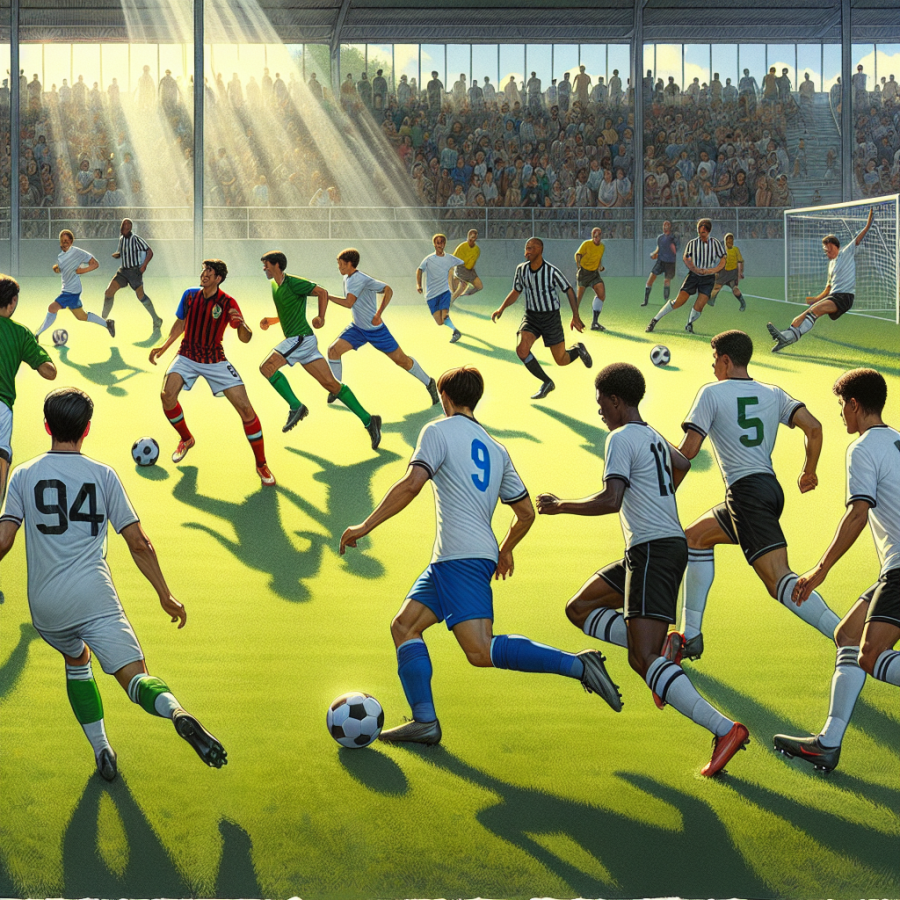The Impact of Player Numbers on Soccer Game Dynamics
Player Numbers and Soccer Game Dynamics
Players' numbers on a soccer field are essential components that shape the game's dynamics. They influence the game strategy, the style of play and the soccer tactics considerably. With each increase or decrease in the number of players involved in a game, there is a corresponding shift in the dynamics of the game.
Influence on Strategy
A coach's strategy heavily depends on the number of players available. A team's formation, which is a tactical organization of players on the field, will change based on the players' numbers. For example, with a traditional 11-player team, a coach might deploy a 4-4-2, a 4-3-3, or a 3-5-2 formation, among others. However, in a 5-a-side match, the coach might opt for a 1-2-1 or 2-1-1 formation owing to the lesser number of players. The players' positioning and their expected duties depend on these formations, which varies with player numbers.
Style of Play and Team Tactics
The style of play is another aspect that depends on player numbers. With fewer players on the field, such as in small-sided games, greater emphasis is placed on individual skills and ball control. Small-sided games, with fewer players, encourage more touches on the ball and therefore increase the opportunity for players to display their individual flair and skills. Conversely, in a full 11-a-side game, the style of play leans more towards elaborate team combination play, tactical execution, and strategic build-up.
In terms of team tactics, the number of players on the field can dictate how a team defends or attacks. Smaller teams generally employ a high-pressing, aggressive-defensive approach as compared to larger teams, where tactics can vary from high-pressing to a deeper lying counter-attacking style.
Effect on Physical and Mental Demands
Physical and mental demands on players can also change with player numbers. In smaller-sided games, players typically cover more ground, accelerating the physical toll due to increased involvement. The mental demands further increase with the necessity to make quicker decisions, given the faster pace and less time to react in small-sided games.
Conversely, with a full team, players might have comparatively fewer touches on the ball which might reduce the immediate physical strain. However, navigating through more players, finding open spaces, and reading the game from diverse formations necessitates heightened tactical understanding and spatial awareness.
Read also:
Soaring High: A Thrilling Guide to Parasailing Adventures
Breaking Down the Player Positions and Roles in Soccer
Soccer, like any other sport, requires strategy and well-defined player roles to execute that strategy effectively. Each player's position on the field denotes a key part of the game plan: defense, midfield, offense, or goalkeeping. Let's take a closer look at the primary roles and responsibilities that make up a soccer team.
The initial setup in soccer consists of four general sections moving from one end of the field to the other: the goalkeeper, defenders, midfielders, and forwards.
Starting at the goal line, the player at the back of the formation is the goalkeeper. The goalkeeper’s primary function is to prevent the opponents from scoring by guarding the goal post. This player is the last line of defense and has special privileges within the game, like being the only player allowed to use their arms and hands within their penalty area.
In front of the goalkeeper are the defenders. Depending on the formation employed, there could be two to five defenders arranged across the field. The center-backs are usually stationed in the middle and are often taller, stronger players whose primary job is to win aerial duels and stop the opposing team’s forwards. Full-backs or wing-backs are defenders positioned on the flanks. They are often quicker and have good crossing abilities to link up with the midfielders and attackers. In certain formations, there may be a defensive midfielder who plays just ahead of the defenders, providing an additional layer of defense.
The midfielders are the engine of the team, positioned centrally between the defenders and attackers. Their responsibilities span both halves of the field. Midfielders have multiple roles, often changing rapidly throughout a game. They are typically expected to support the defense in regaining possession from the opposition and then quickly transition to assisting in the attack.
Finally, the forward players or strippers are usually closest to the opponent's goal. Their primary responsibility is to score goals and create scoring opportunities for their team. Some teams play a single striker with other players in supporting offensive roles, while others may employ two or three strippers in various offensive alignments.
Understanding the expectations and responsibilities of each position is crucial for team cohesion. Each player's role in their position is like a piece of a puzzle. All the individual parts work together to create a cohesive whole. Alone, a piece may not appear to have significant value, but together they form a clear, effective picture of team strategy.




